centramatic
now browsing by tag
4x100
5x108
5x112
5x1143
alloy
audi
baby
bearing
black
brand
carbon
compatible
custom
enkei
fiat
ford
front
genuine
grey
honda
japan
mercedes
model
offer
opel
pram
price
pushchair
rays
rear
rims
series
silver
steering
stroller
super
system
toyota
travel
tyres
vauxhall
vivaro
wheel
wheels
work
Jeep 4.5 or 5(Needs Spacer From Aftermarket) Centramatic Wheel Balancer 300-345

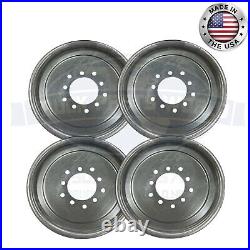
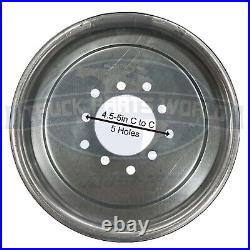

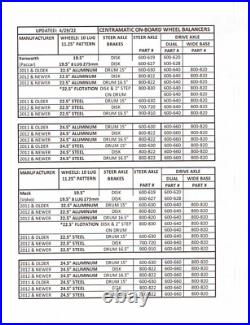
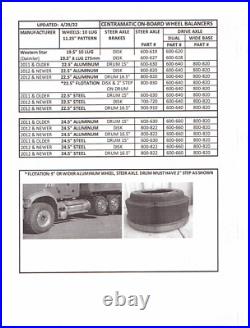
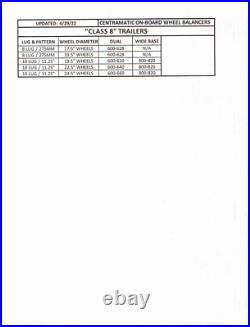
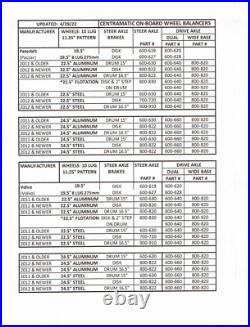
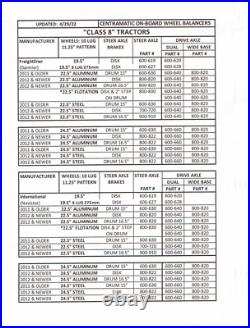
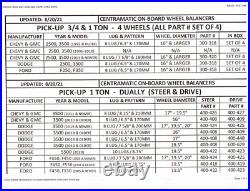

Due to variances between models, we may not be able to fit all applications. Light Duty Trucks Trailers/RVs. Increases tire life 25%-50%. Helps prevent tire cupping. Lower tire operating temps 8%-10%. How do they work? By using centrifugal force the free moving weights (durametal and synthetic fluid) sealed in the balancer automatically distributes to exactly where needed, placing the assembly in equilibrium or perfect balance. When a sprung assembly is out of balance, deflection is caused via the springs or tire sidewalls. These free moving weights sense this deflection and move opposite the heavy points to balance the entire assembly, wheels, tires, drums, hubs, even mud, snow or ice stuck to the wheels. Can Centramatics help tires that are already cupped? Depending on the severity. Tires that are severely cupped will receive marginal results. While tires that are slightly cupped will true out. The balancers cannot grow rubber back where it is gone nor will it make the deeper tread wear faster. One or the other would have to occur to be able to correct severe tire cupping. How are they installed? Simply remove the wheel, use the bolt holes as guides and reinstall the wheel. Steer axle balancers mount between the hub and wheel, while balancers for the duals mount between the dual wheels. At what speed do Centramatics start working? Most models start working at 20-22 mph depending on wheel diameter. This occurs long before vibration due to imbalance, which is at speeds in excess of 35 mph. How long do they last? We have balancers with 1,439,716 miles on them and still in good working condition. Alignments control the direction and travel of the tires. Vehicles must be aligned by creditable alignment facilities to exacting specifications. Pre-mature tire wear and resulting vibration occurs if proper alignment is not maintained. Worn, loose or missing suspension components must be replaced. Centramatics balance the assembly and cannot correct alignment issues. What about mis-mounted tires or improperly seated beads? This problem can be found by inspecting the area where the wheel and tire meet. A guide rib or circumference ring is molded into the sidewall of the tire. Measure the distance from the wheel to the guide rib approx. ½ inch depending on tire brand, at the top, bottom and both sides, a variance in this distance indicates a mis-mount. A mis-mounted tire will roll out of round. This leads to erratic tire wear and vibration, regardless of how well it is balanced. Reseating the bead properly corrects the problem. What is inside the rings? Our balancing media consists of two parts. Part one is durametal, a hardened alloy similar to shot but 10 times harder. This is primary media, as a solid cannot change shape or form under centrifugal force. It remains exactly where needed under high speed. Part two, the dampening fluid is proprietary synthetic oil, designed to operate in the most extreme environments. The rings are about 1/3 full of this fluid. Its function is to lubricate, dampen vibration and help balance. However, a liquid alone would merely flatten out under centrifugal force at high speed and be forced back around the ring to an undesirable position. That’s why we use the benefits of both solid and a liquid. Should the rear duals and trailers be balanced? Absolutely, the largest investment in tire dollars are on the rear. Typically, even when loaded, duals carry less weight per tire and are prone to pounding. This causes excessive heat build-up and excessive, erratic tire wear. Centramatics help cool the duals and one pair of balancers handles four tires, wheels, hubs, and drums. Rear drums are a major cause of imbalance on dual assemblies.

 D5 Creation
D5 Creation